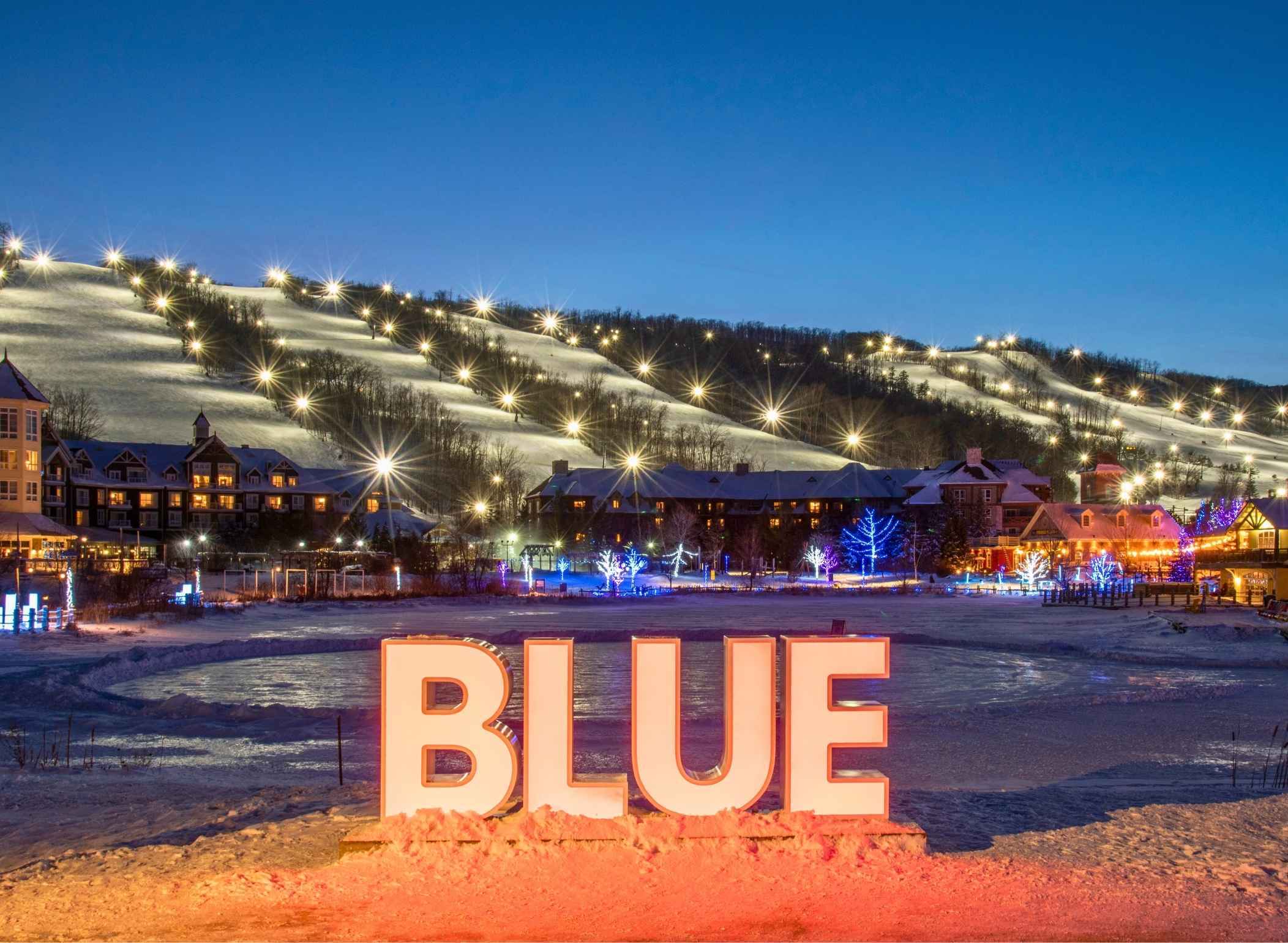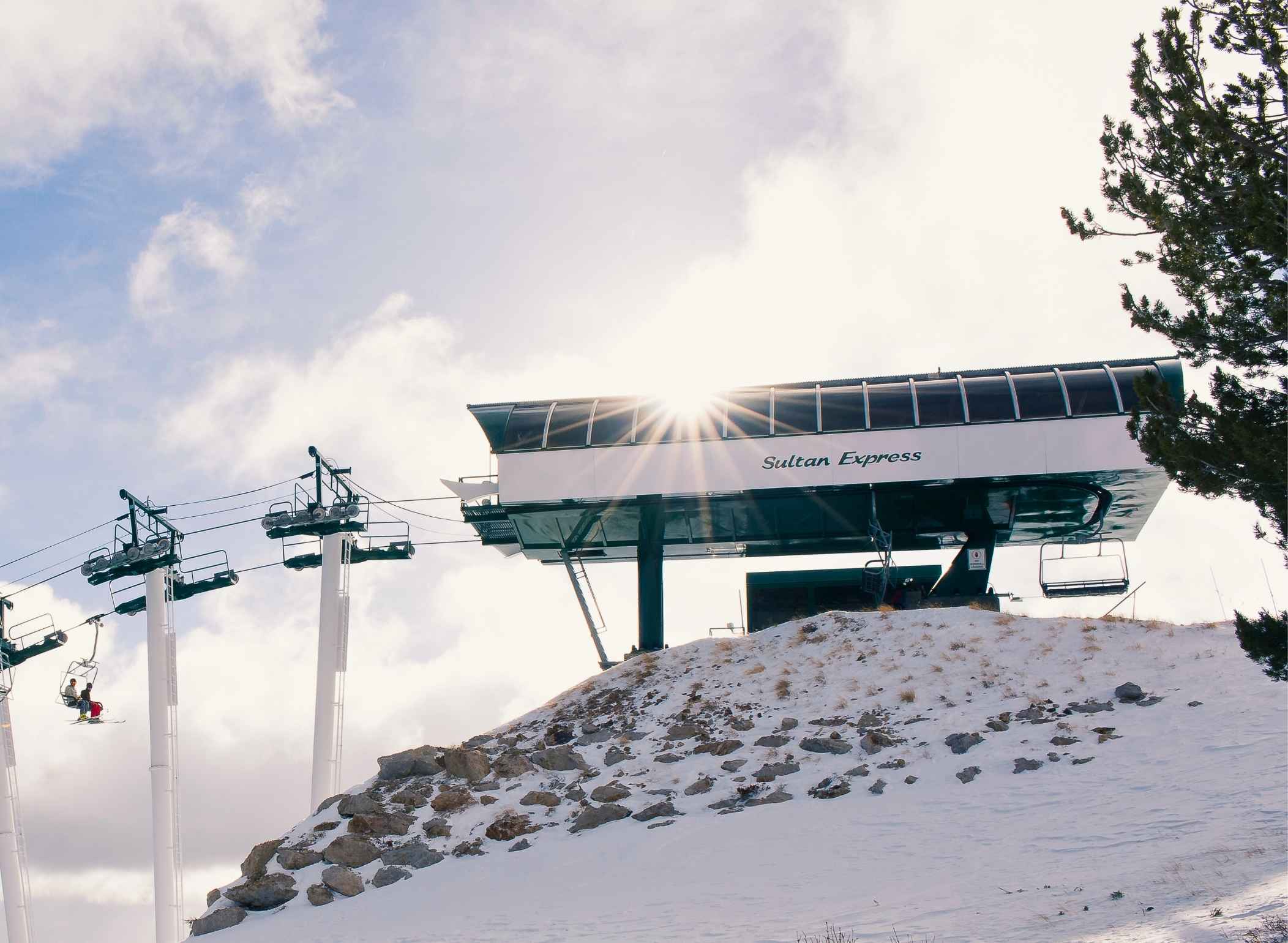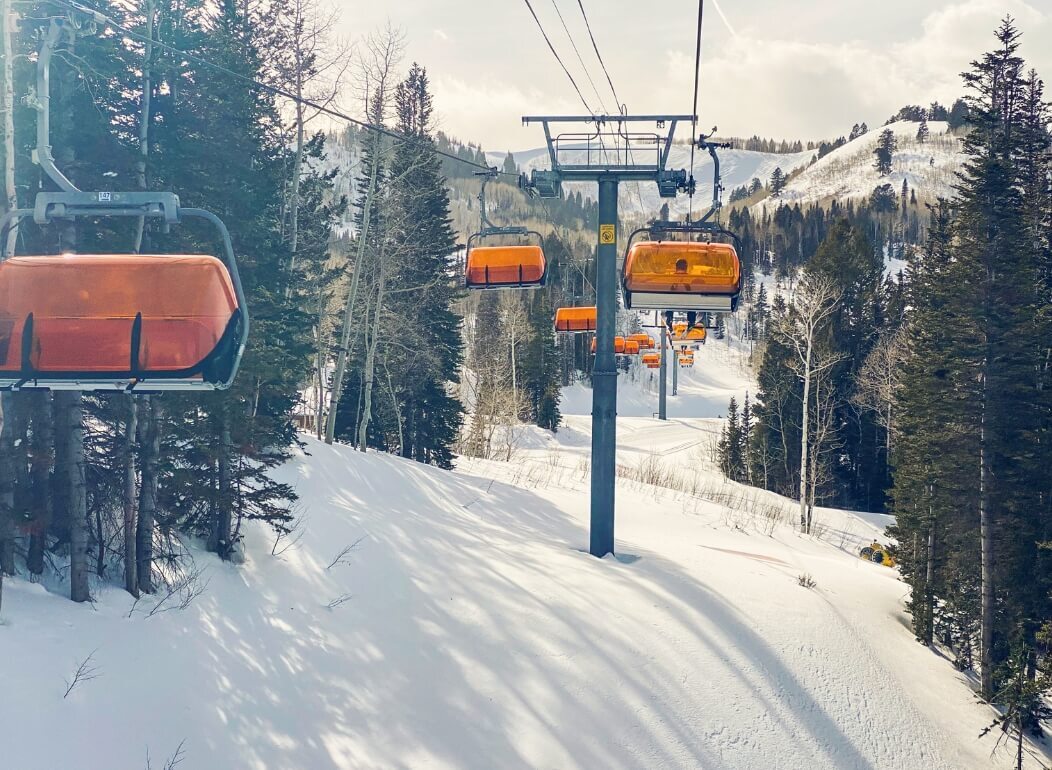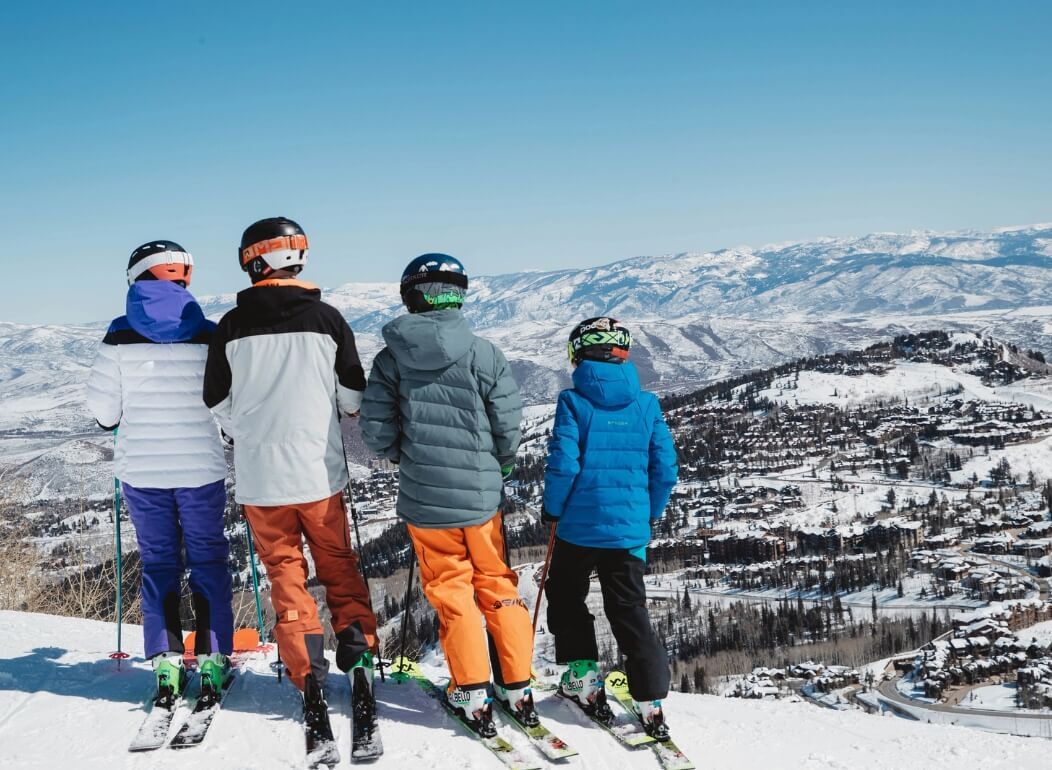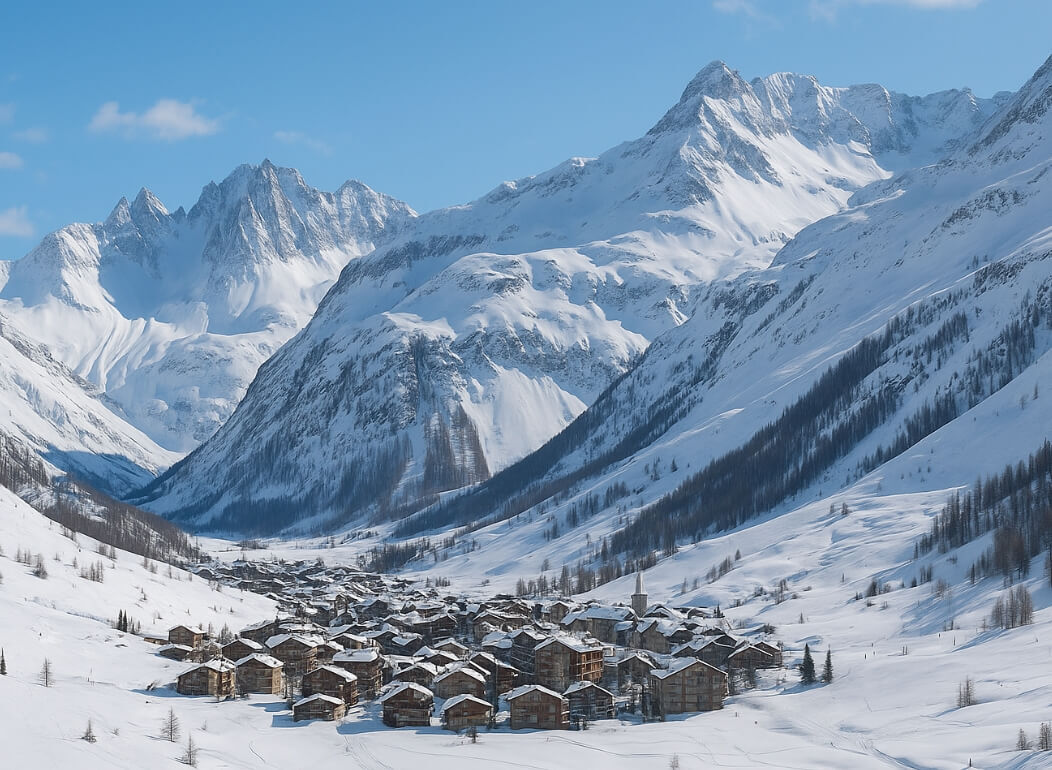East Coast skiers need to know this before you ski the Rockies
If you grew up skiing on mountains along the Appalachians, you probably have some unconscious assumptions that can get you into some trouble when it comes to making turns in the Rockies.
No slight on the Green Mountains of Vermont or the Catskills of New York – they are beautiful. But the extra 10,000+ feet of altitude in the Rockies makes a big difference, and the longer trails mean you’re exposed to the elements for a lot longer.
1. Layer up! For real now.
I’ll be honest here. As a New England-born skier, even on the colder days I always wore cotton “thermal” long underwear. Throw on some jeans, a sweater, and water “resistant” shells and I was done. Sure, I was cold by the time I got back to the base, but that’s what the lodge was for, right?
Don’t be me. Heat management is super important. You need to be able to stay warm in driving wind or when sitting on a chair lift, but be able to shed the heat you create as you exercise.
The temperature rise from morning to afternoon is more extreme, too. Dress perfectly for morning and you may end up sweating through the afternoon. A friend of mine said:
“I went hiking once in January (and mind you, I have zero experience) and I was super shocked to learn that you should shed clothes as you sweat more!”
She’s right! Being stuck in wet, sweaty clothing will make you even colder. Here’s how to prevent that.

Wicked Layering
Start with light layers that wick away sweat. Synthetics work great for your base layer – I’m fond of Columbia’s Omni-Heat line. Merino wool is also a great choice, although it can cost more. Either way, they’re lighter and pack down smaller than the old cotton thermals you might have. (Just throw those out. Seriously.)
On top of that, you want another couple of thin layers. Your mid-layers should be ventable – just unzipping a bit can really help fine-tune your heat management.
Finally, a medium or heavy weight top and then your outer shell round it out. Some ski jackets even have vents you can open up to help stay cool and dry!

Waterproof. Not “resistant”.
Be sure that shell really is waterproof; too often inexpensive “waterproof” garments seep and leak at the seams. There are lots of waterproofing systems, but Gore-Tex is an old reliable. Gore-Tex has rigorous requirements for seaming and edging to prevent seeping and leaking. Anything sold by REI is also a good bet. (No affiliation, I just love REI!)
2. Bring a Hydration System
High altitudes suck the water out of your body. Unless you’re sticking to the bunny slopes, take along a water supply.
I like Camelbak hydration backpacks. A typical pack holds a liter or two of water, plus easy storage for keys, hand warmers, “Go Packs” of tissue for the inevitable runny nose, and snacks (always have a few bars on hand!). They’re inexpensive and useful in all seasons, not just winter. #worthit
No fancy hydration system? At least grab a water bottle before you head out and stick it in a backpack. But for under $50 you can be well prepared with that camelbak.
Warning: Don’t refill from untreated water sources. Giardia is no fun, and there are plenty of water stations in the lodge (reduce-reuse-recycle, people!)
Pack These to Prepare for Dry Air
- Eye drops to comfort wind-dried eyes. This is especially important if you wear contact lenses.
- Lip balm and moisturizing lotion for both face and body. Be sure that there’s SPF in there too!
- Throat lozenges with you for the nearly-inevitable sore throat. Hard candy works in a pinch, too.
- Nasal spray if you are prone to winter nosebleeds.
3. Prepare for Sunburn
The worst sunburn I’ve ever had was because I underestimated the winter sun out west.
If you grew up skiing the east, you probably had far more overcast days than sunny. This sets you up for unexpected sunburn. Not only do the Rockies tend to have more clear days, the extra 10,000 feet of elevation means there’s much less shielding from the sun’s ultraviolet (UV) rays.

Even when the clouds are out, in truth you’re still not safe. Though clouds cut down on the UVB light that causes superficial burns, the sun’s more powerful UVA rays punch right through cloud and fog – and deeper into your skin, where it can cause long term damage.
Pack high-SPF sunblock for your skin, UV-blocking lip balm, and a hat with a brim. Make sure your goggles or sunglasses are UV-blocking, too.

4. Carry Emergency Gear
No need to carry along an entrenching tool, but if (when!) the weather takes a turn for the sub-zero, you can be ready. If you get into trouble, it will take longer to get help than you expect. Be prepared.
- Instant-heat chemical hand warmers. Keep a few in a (zipped) pocket. I like to have a couple small ones for mittens and gloves, and a larger packet for boots.
- Your phone and a power bank/battery. Depending on your network, you may or may not get service on the mountain, but any chance beats no chance. If, heaven forbid, you get stuck or hurt, you can use it to text your location to a friend or rescuer. Just open up the Maps app and hit the Share button.
- A warm hat. You’re already wearing a helmet, right? Right. But sometimes you’ll want to take it off. Don’t test the wind chill forecast. Mother Nature doesn’t mess around.
- Snacks! It sounds obvious, but remember that having a couple granola bars or protein bars handy can stave off a nasty blood sugar crash.

5. Keep Your Phone Warm
Only one thing sucks more than dropping your phone in the snow when you’re trying to capture an amazing view. It’s that phone turning off while you’re trying to take that picture.
Nothing, but nothing, kills a battery faster than cold. Keep your phone on an inside pocket, where the insulation will use your body heat to keep it warm.
Pro Tip: Place one of those handwarmers against the back of the phone and toss in a coozie! What keeps your beer cold can help keep your phone warm!
You may have run into this on the East Coast already. It’s even faster out West.

Don’t forget the fun parts!
Pack some nice clothing for nights out. Casual attire is fine, even at the high end resorts, but sweats and a t‑shirt aren’t exactly flattering. You’ll feel better in quality casual wear. Some dark jeans and a button-down shirt never go amiss. Ladies, pack that fur vest!
If you’re bringing a dedicated camera skiing, pack extra batteries and keep them warm. When you go inside during the day, don’t take your camera out of your bag – the lens will fog up. Then you have to wait for the moisture to evaporate off before you take it back into the freezing cold. Keep the batteries warm but let the stay camera cold.
If you love wildlife, carry pocket-sized binoculars. You’ll get a better view without disturbing the animals, or putting yourself in danger trying to get closer.
What’s your best tip?
East coast skiers, what did you learn the hard way? Leave a comment here, tweet to @skibutlers or comment on our Instagram @skibutlers!
There’s a reason Utah calls its snow the #GreatestSnowOnEarth. @deer_valley showing off ??
— Ski Butlers (@skibutlers) January 30, 2019
Photo: Abby Railton pic.twitter.com/fKMJdvNq1F








